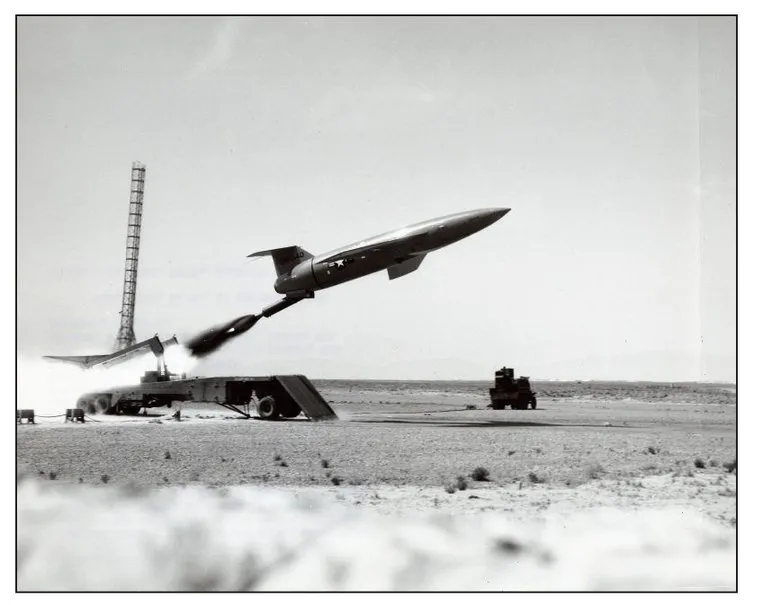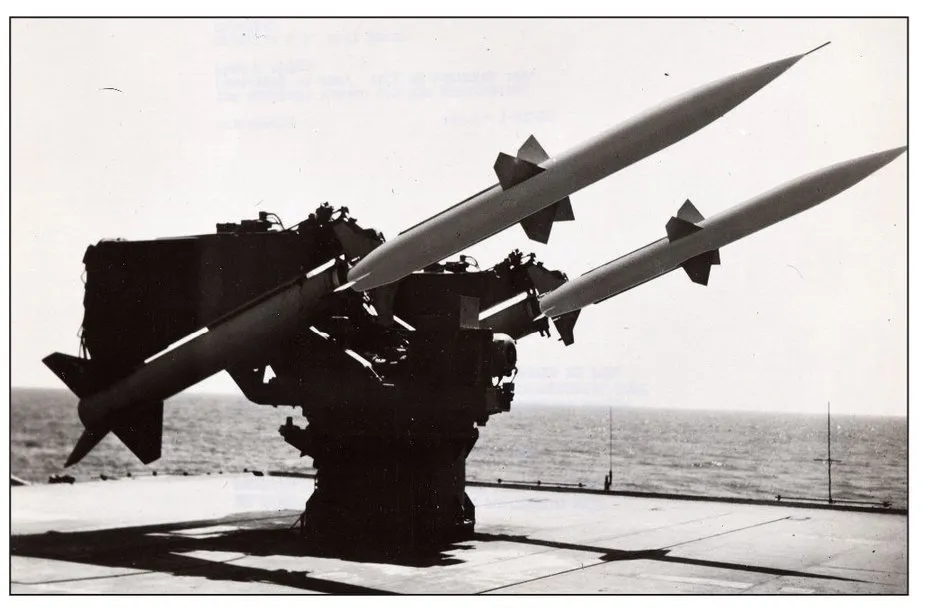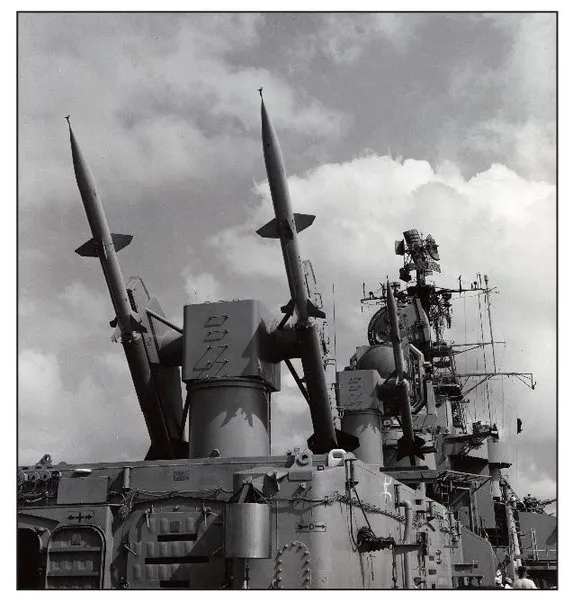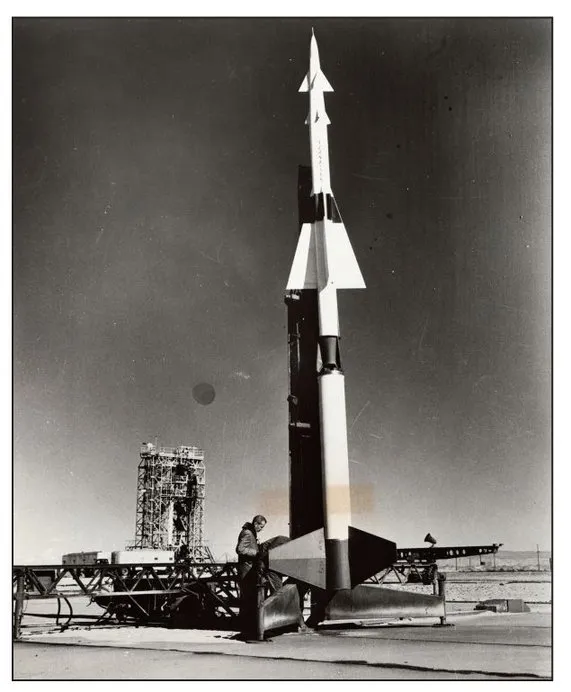
eBook - ePub
American Missiles
The Complete Smithsonian Field Guide
Brian D. Nicklas
This is a test
Share book
- 336 pages
- English
- ePUB (mobile friendly)
- Available on iOS & Android
eBook - ePub
American Missiles
The Complete Smithsonian Field Guide
Brian D. Nicklas
Book details
Book preview
Table of contents
Citations
About This Book
This remarkable guide provides for the first time an illustrated listing of almost 200 of Americas most powerful missiles. With information on all aspects of the missiles specifications, including the speed and capacity of the explosives used in its warhead, this book provides a comprehensive guide to the US Armys projectile hardware. 'American Missiles: The Complete Smithsonian Field Guide' draws heavily on the Herbert S. Desind Photo Collection, a resource of more than 110, 000 images recently catalogued at the National Air and Space Museum. Of interest to both the specialist and the aviation enthusiasts, this book demonstrates the evolution of American missile design over the last forty years in an accessible and entertaining format.
Frequently asked questions
How do I cancel my subscription?
Can/how do I download books?
At the moment all of our mobile-responsive ePub books are available to download via the app. Most of our PDFs are also available to download and we're working on making the final remaining ones downloadable now. Learn more here.
What is the difference between the pricing plans?
Both plans give you full access to the library and all of Perlego’s features. The only differences are the price and subscription period: With the annual plan you’ll save around 30% compared to 12 months on the monthly plan.
What is Perlego?
We are an online textbook subscription service, where you can get access to an entire online library for less than the price of a single book per month. With over 1 million books across 1000+ topics, we’ve got you covered! Learn more here.
Do you support text-to-speech?
Look out for the read-aloud symbol on your next book to see if you can listen to it. The read-aloud tool reads text aloud for you, highlighting the text as it is being read. You can pause it, speed it up and slow it down. Learn more here.
Is American Missiles an online PDF/ePUB?
Yes, you can access American Missiles by Brian D. Nicklas in PDF and/or ePUB format, as well as other popular books in Technik & Maschinenbau & Militärwissenschaft & -technologie. We have over one million books available in our catalogue for you to explore.
Information
American Missiles
MGM-1 Matador

Right ½ front view of a MGM-1 (B-61) Matador Missile just at launch from a mobile launcher from the Air Force Missile Test Center, Cocoa, Florida. September 20, 1951.

Right ½ rear view of a MGM-1 Matador missile on launch platform, showing the detail of the Rocket Assisted Take-off (RATO) motor under the rear fuselage. Appears to be a test round at launch from Holloman AFB, New Mexico early in the Matador program.
Specifications
Length: 39 ft 8 in (1209.04 cm)
Diameter: 4 ft 6 in (137.16 cm)
Maximum Span: 27 ft 11 in (850.90 cm)
Height: 9 ft 8 in (294.64 cm)
Speed: over 650 mph
Function: Surface-to-Surface
Weight: 13,800 lbs (6,265 kg)
Warhead: W5 Nuclear Warhead, 20 KT
Guidance: Ground Guidance
First Use Date: 1949 – Holloman AFB, NM
Producer: Martin Company, Baltimore, Maryland
Users: US Air Force, Germany
Other Designations: B-61, TM-61, T-50
Status: Was operational, withdrawn from use
Diameter: 4 ft 6 in (137.16 cm)
Maximum Span: 27 ft 11 in (850.90 cm)
Height: 9 ft 8 in (294.64 cm)
Speed: over 650 mph
Function: Surface-to-Surface
Weight: 13,800 lbs (6,265 kg)
Warhead: W5 Nuclear Warhead, 20 KT
Guidance: Ground Guidance
First Use Date: 1949 – Holloman AFB, NM
Producer: Martin Company, Baltimore, Maryland
Users: US Air Force, Germany
Other Designations: B-61, TM-61, T-50
Status: Was operational, withdrawn from use
The Matador has been described as the first operational guided weapon used by the US Air Force as all preceding weapons were unguided, the distinction between unguided rockets and missiles like the MGM-1. (A rocket can be part of a missile, but not vice-versa.) The Matador was originally designated as a bomber, the B-61 before being used operationally as the TM-61, could be equipped with a conventional or nuclear warhead. The Matador could be distinguished from the latter similar looking missile the Mace by the Matador’s shorter, yet more pointed nose cone. The Matador could be fired from mobile launchers or from fixed emplacements. Over 1,200 Matadors were produced by Martin, and the last of the operational missiles were replaced in 1962. After which the MGM-1 designation was applied.
RIM-2 Terrier

Right ½ front view of shipboard launcher on the USS Mississippi (EAG-128) holding two RIM-2 Terrier missiles.

Left ¼ front view of shipboard launcher on the USS Canberra (CAG-2) holding two RIM-2 Terrier missiles.
Specifications
Length: 27 ft (823 cm)
Diameter: 1 ft 2 in (35.56 cm)
Maximum Span: 4 ft (121.92 cm)
Function: Surface-to-Air
Weight: 3,300 lbs (1,498 kg)
Warhead: 220 lbs, High Explosive
Guidance: Radar Guided
First Use Date: 1951
Producer: Convair
Users: US Navy, Italy, Netherlands
Other Designations: SAM-N-7
Status: Was operational, withdrawn from use
Diameter: 1 ft 2 in (35.56 cm)
Maximum Span: 4 ft (121.92 cm)
Function: Surface-to-Air
Weight: 3,300 lbs (1,498 kg)
Warhead: 220 lbs, High Explosive
Guidance: Radar Guided
First Use Date: 1951
Producer: Convair
Users: US Navy, Italy, Netherlands
Other Designations: SAM-N-7
Status: Was operational, withdrawn from use
The Terrier was the first operational surface-to-air missile used by the US Navy. Guided missile cruisers were equipped with multiple launchers, each launcher having two rails each for the RIM-2. The two stage Terrier was initially lofted by a 12 ft long booster, which combined with the main sustainer motor (both solid fuel rocket type) would push the RIM-2 to speeds approaching Mach 2.5. The Terrier was equipped with a conventional explosive warhead.
MIM-3 Nike-Ajax

Left ¾ front view of Site 40, Battery C, 865th AAA Missile Battalion, one of 16 units of the 108th Arty Group (AD). The site is located at Long Beach, California and is equipped with MIM-3 Nike-Ajax missiles.

View of an erected MIM-3 Nike-Ajax missile at White Sands Missile Range, New Mexico.
Specifications
Length: 34 ft 10 in (1061.72 cm)
Diameter: 12 in (30.48 cm)
Maximum Span: 4 ft 6 in (137.16 cm)
Function: Surface-to-Air
Weight: 2,259 lbs (1,025 kg)
Warhead: (3) High Explosive, Fragmentation
Guidance: Radar Commanded
First use: 1952
Producer: Western Electric with Douglas Aircraft
Users: US Army
Other Designations: SAM-A-7
Status: Was operational, withdrawn from use
Diameter: 12 in (30.48 cm)
Maximum Span: 4 ft 6 in (137.16 cm)
Function: Surface-to-Air
Weight: 2,259 lbs (1,025 kg)
Warhead: (3) High Explosive, Fragmentation
Guidance: Radar Commanded
First use: 1952
Producer: Western Electric with Douglas Aircraft
Users: US Army
Other Designations: SAM-A-7
Status: Was operational, withdrawn from use
The first anti-aircraft surface-to-air missile used by the United States military, the MIM-3 Nike Ajax would come to symbolize air defense of American cities for years to come, by virtue of the Nike name. Development began post-World War Two, from ideas formulated during the...